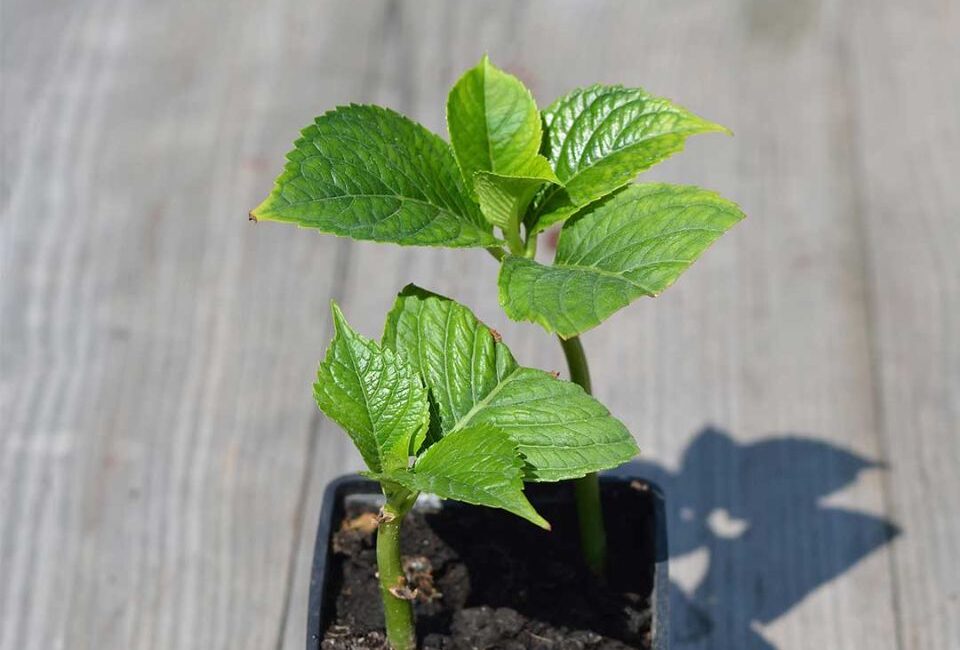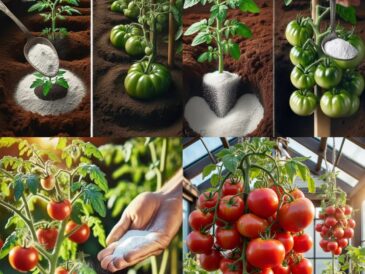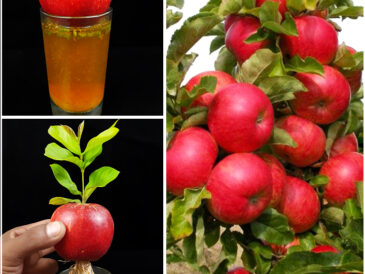A lush, vibrant backyard doesn’t have to come with a hefty price tag. Instead of purchasing expensive plants or paying for professional landscaping, you can create a beautiful garden with the power of plant propagation. One of the most effective and cost-efficient methods for expanding your outdoor space is using plant cuttings. This technique not only saves money but also allows you to grow plants that are well-suited to your specific environment. With a bit of patience and knowledge, you can transform your outdoor space into a green oasis that will thrive for years to come.
What is Plant Propagation Through Cuttings?
Plant propagation through cuttings involves taking a piece from an existing plant—whether it be a stem, leaf, or root—and encouraging it to grow into a new plant. This method allows gardeners to duplicate desirable plants, ensuring that the new plant retains the same characteristics as the parent plant. While propagation from seeds is an option, cuttings tend to offer quicker results, as they bypass the germination phase, starting with a mature, ready-to-root piece. This makes it an excellent choice for a lush garden that can take root faster.
Benefits of Propagating Plants from Cuttings
There are several advantages to propagating plants from cuttings, which makes this technique ideal for many gardeners:
- Cost-Effective: Buying new plants for every new addition to your garden can add up quickly. By using plant cuttings, you can expand your garden without spending much money. Once you have a plant you love, you can propagate it indefinitely.
- Genetic Consistency: When you propagate plants through cuttings, you ensure that the new plants are genetic clones of the parent. This is ideal when you have a plant that has done particularly well in your environment or has special characteristics you want to preserve.
- Faster Growth: Cuttings often establish roots and grow faster than seeds because they are already mature pieces of the plant. As a result, your garden will fill out more quickly.
- Sharing and Gifting: Propagating plants gives you the opportunity to share your gardening successes with friends and family. It’s a great way to build a gardening community and help others start their own lush outdoor spaces.
- Diversity and Customization: Propagating your own plants lets you tailor your garden to your specific tastes and needs. You can create a garden that not only looks great but thrives in your particular climate and soil conditions.
Essential Tools and Materials for Successful Propagation
To propagate plants from cuttings effectively, you’ll need a few key tools and materials to ensure success. Here’s a list of items you’ll need:
- Sharp Pruning Shears or Scissors: Clean and sharp scissors are essential to making clean cuts that won’t damage the parent plant.
- Rooting Hormone: While not strictly necessary, rooting hormone can significantly improve the chances of your cuttings forming healthy roots. It encourages faster rooting and helps reduce the likelihood of rotting.
- Small Pots or Containers: Containers with drainage holes are vital for preventing water from accumulating around the roots and causing rot. You can repurpose old containers or use fresh pots.
- Well-Draining Potting Mix: Choose a soil mix designed for cuttings, typically a light, well-draining medium that helps encourage root growth.
- Clear Plastic Bag or Propagator: These help maintain humidity around the cutting. You can use a plastic bag to cover the pot or purchase a small propagator designed specifically for cuttings.
- Labels: Keeping track of the different plant cuttings you have is essential, especially when propagating multiple types of plants.
Preparing Your Backyard for New Plants
Before you introduce new plants into your garden, it’s important to assess the conditions of your backyard. Here are some factors to consider when preparing your space:
- Sunlight: Different plants require different amounts of light. Some need full sun, while others prefer partial shade. Know the sunlight requirements for each plant and place them accordingly in your garden.
- Soil Quality: Ensure your soil is well-draining and rich in nutrients. Adding organic compost or other soil amendments can greatly improve the quality of your soil, helping your new plants establish strong roots.
- Drainage: Good drainage is essential for plant health. Without proper drainage, roots can suffocate, leading to rot. Make sure that your pots or garden beds have adequate drainage, and consider using a mix of potting soil and sand for better permeability.
- Weed Control: Before introducing new plants to your garden, make sure to clear the area of weeds, as they can compete with your cuttings for nutrients and water.
- Space Planning: Plan the layout of your garden. Consider the mature size of your plants and how much space they will need to grow. Grouping plants with similar care requirements together is an excellent way to ensure they all thrive.
Top 20 Plants to Propagate from Cuttings
Here are the top 20 plants that can easily be propagated from cuttings. These plants are not only easy to propagate but also offer diverse options for your garden, each with unique beauty and benefits.
- Rose: Roses are beautiful and aromatic flowers that can easily be propagated from healthy stem cuttings. Simply cut below a node, remove the lower leaves, dip the cutting in rooting hormone, and plant it in a well-draining potting mix.
- Lavender: Lavender’s fragrant flowers and aromatic foliage make it an excellent addition to any garden. Propagate by taking a 4-6 inch cutting from a non-flowering stem, removing lower leaves, and dipping the end in rooting hormone.
- Mint: Mint is a fast-growing herb that can be propagated by simply placing a cutting in a glass of water until roots develop.
- Basil: Basil can be propagated from cuttings, with roots forming quickly in water. This is a great option if you want a constant supply of fresh basil for your culinary needs.
- Geranium: Geraniums are colorful flowering plants that propagate well from cuttings. Simply take a healthy stem cutting, remove the lower leaves, and dip in rooting hormone.
- Hydrangea: Hydrangeas are beloved for their large, colorful flowers. They can be propagated from softwood cuttings taken in early summer.
- Fuchsia: Known for their pendulous, vibrant flowers, fuchsias are easy to propagate from cuttings. Place the cuttings in a moist environment to encourage rooting.
- Pothos: Pothos, a versatile and low-maintenance plant, can thrive both indoors and outdoors. Simply cut a piece with at least two nodes and root it in water.
- Spider Plant: The “babies” or plantlets of the spider plant can be easily propagated by placing them in water until they develop roots.
- Jade Plant: A hardy succulent, jade plants can be propagated from stem cuttings, which should be allowed to callus before being planted.
- Succulents: Almost any succulent can be propagated from cuttings. Let the cut ends dry out before planting them in well-draining soil.
- Begonia: Begonias, prized for their striking foliage, can be propagated from both leaf and stem cuttings.
- Coleus: Known for its vibrant, multicolored leaves, coleus can be propagated from stem cuttings placed in water until roots form.
- Philodendron: This popular houseplant is easy to propagate from stem cuttings with at least one node. It does well in a variety of conditions, making it perfect for beginners.
- Rosemary: A fragrant and flavorful herb, rosemary can be propagated by taking a cutting from a healthy stem and planting it in well-draining soil.
- Sage: This herb is easy to propagate and grows best in full sun with well-drained soil. Take a cutting from a healthy stem and root it in a small pot.
- Thyme: Thyme can be propagated from 3-inch stem cuttings. It thrives in full sun and well-draining soil.
- African Violet: This beloved houseplant, known for its vibrant blooms, can be propagated from leaf cuttings. Keep them in a humid, bright environment to encourage rooting.
- Snake Plant: Snake plants are incredibly resilient and can be propagated by cutting leaves into sections and allowing them to root in water or directly in the soil.
- ZZ Plant: The ZZ plant is another hardy houseplant that propagates well from leaf cuttings. Let the cuttings dry out before planting in well-draining soil.
Caring for Your New Plants
Once you’ve propagated your cuttings, it’s important to care for them as they root and grow:
- Watering: Keep the soil consistently moist but not waterlogged. Water the cuttings regularly, but allow the excess water to drain away.
- Fertilization: Use a balanced fertilizer to encourage healthy growth. Be sure to adjust the fertilization schedule depending on the specific needs of each plant.
- Humidity: Maintain humidity around your cuttings to ensure proper rooting. Using a clear plastic bag or propagator can help retain moisture.
- Light: Place your propagated plants in a location that provides the right amount of light. Some plants prefer full sun, while others do better in shaded areas.
Troubleshooting Common Issues in Propagation
Propagation isn’t always perfect. Here are some common issues you might encounter:
- No Roots: If your cuttings don’t root, make sure the
cutting was taken from a healthy plant, and that the environment is warm and humid. You may also need to check if the cutting was dipped in rooting hormone.
- Rotting Cuttings: This is usually caused by overwatering or not allowing the cuttings to callus. Ensure the soil is well-draining and that the cuttings are not submerged in water.
- Weak Growth: If your new plants are growing slowly or weakly, they might need more light, nutrients, or warmer temperatures.
Conclusion: Transform Your Backyard with Plant Cuttings
With a little effort, plant cuttings can be a simple and fun way to fill your backyard with beautiful, thriving plants. Not only do you get to propagate plants you already love, but you also have the opportunity to experiment and expand your garden without spending a fortune. By following the steps above, you can create a lush, sustainable garden that will bring beauty and joy to your outdoor space for years to come. Happy propagating! 🌱🌿🌸




